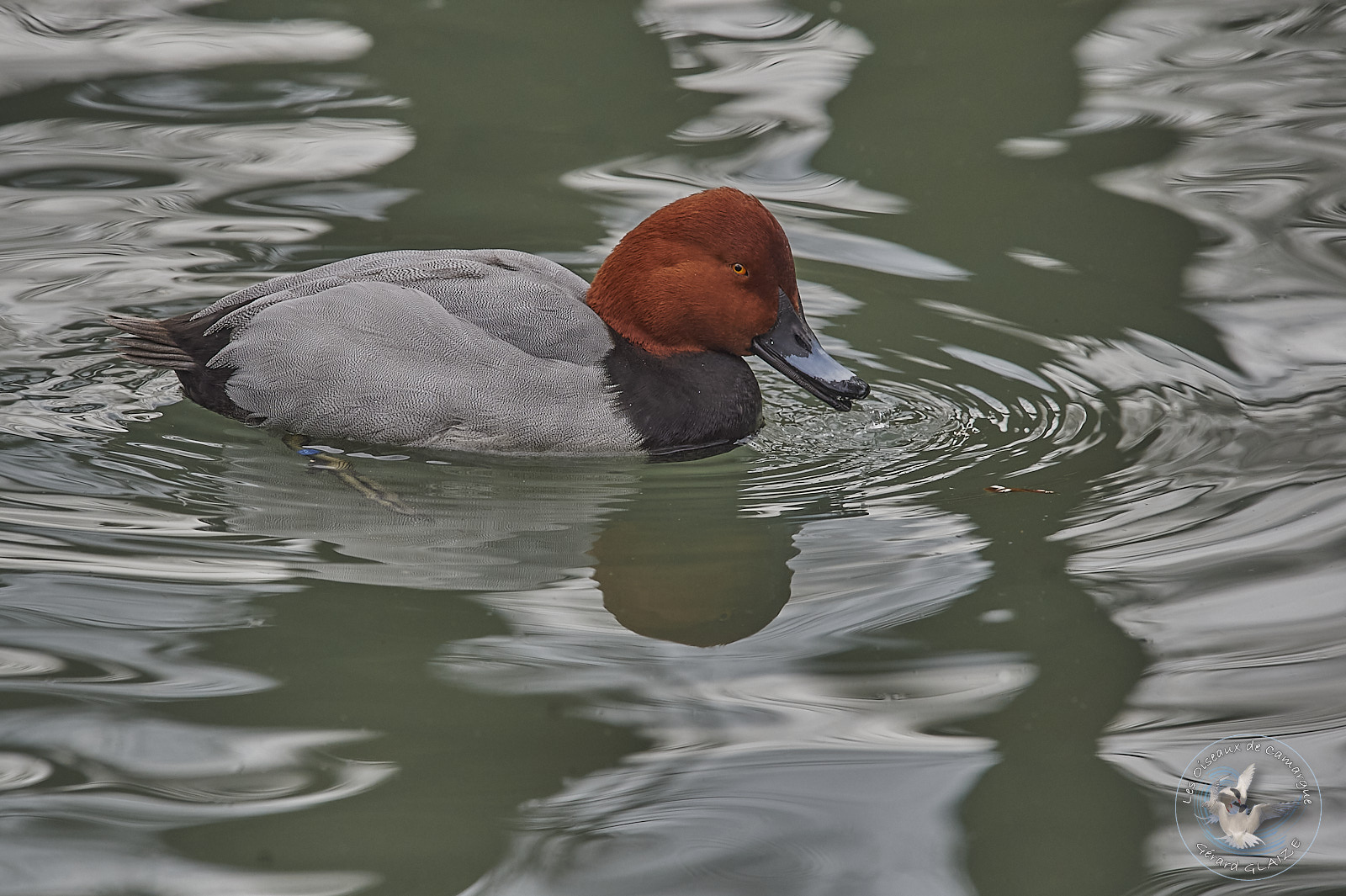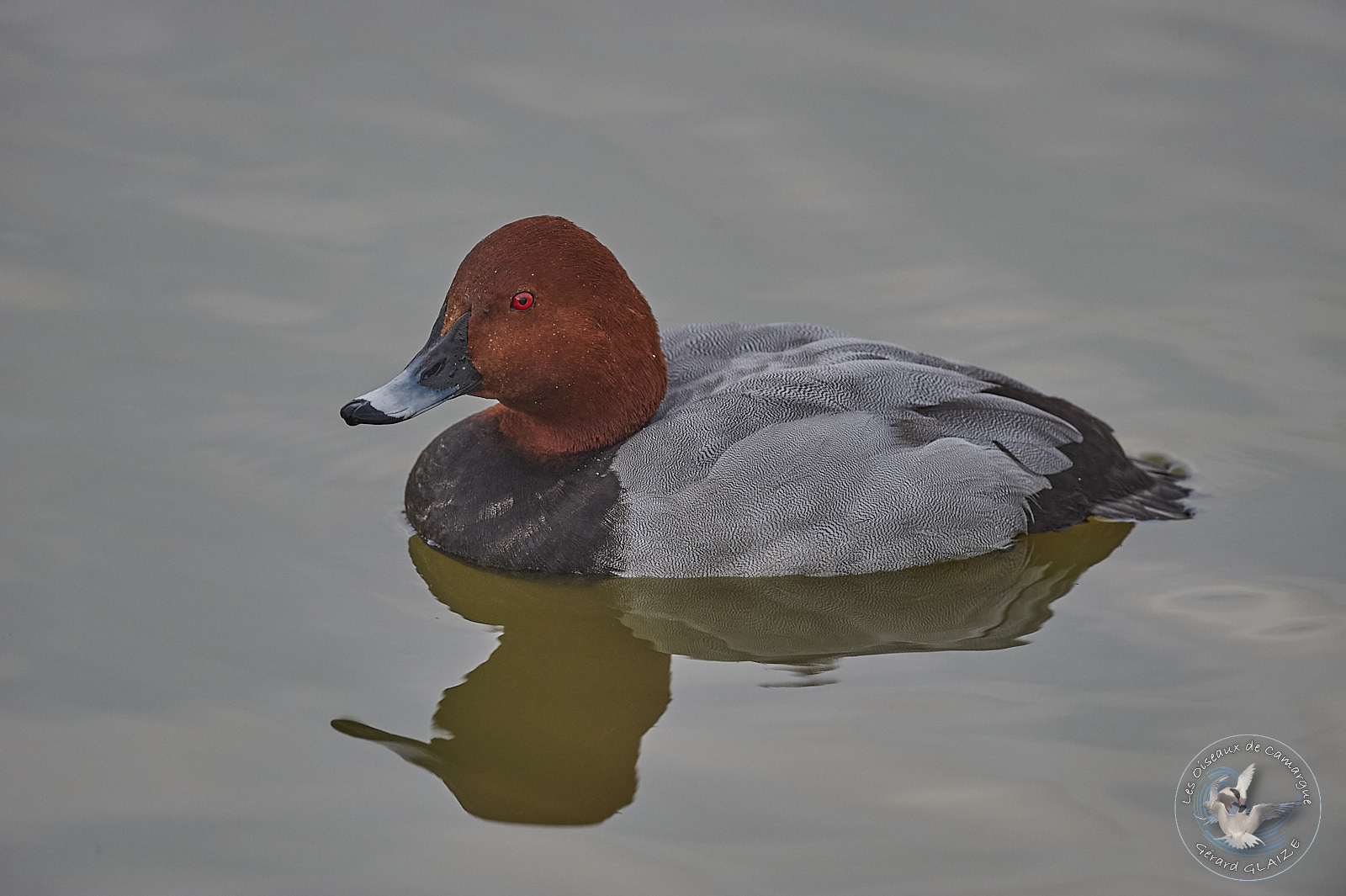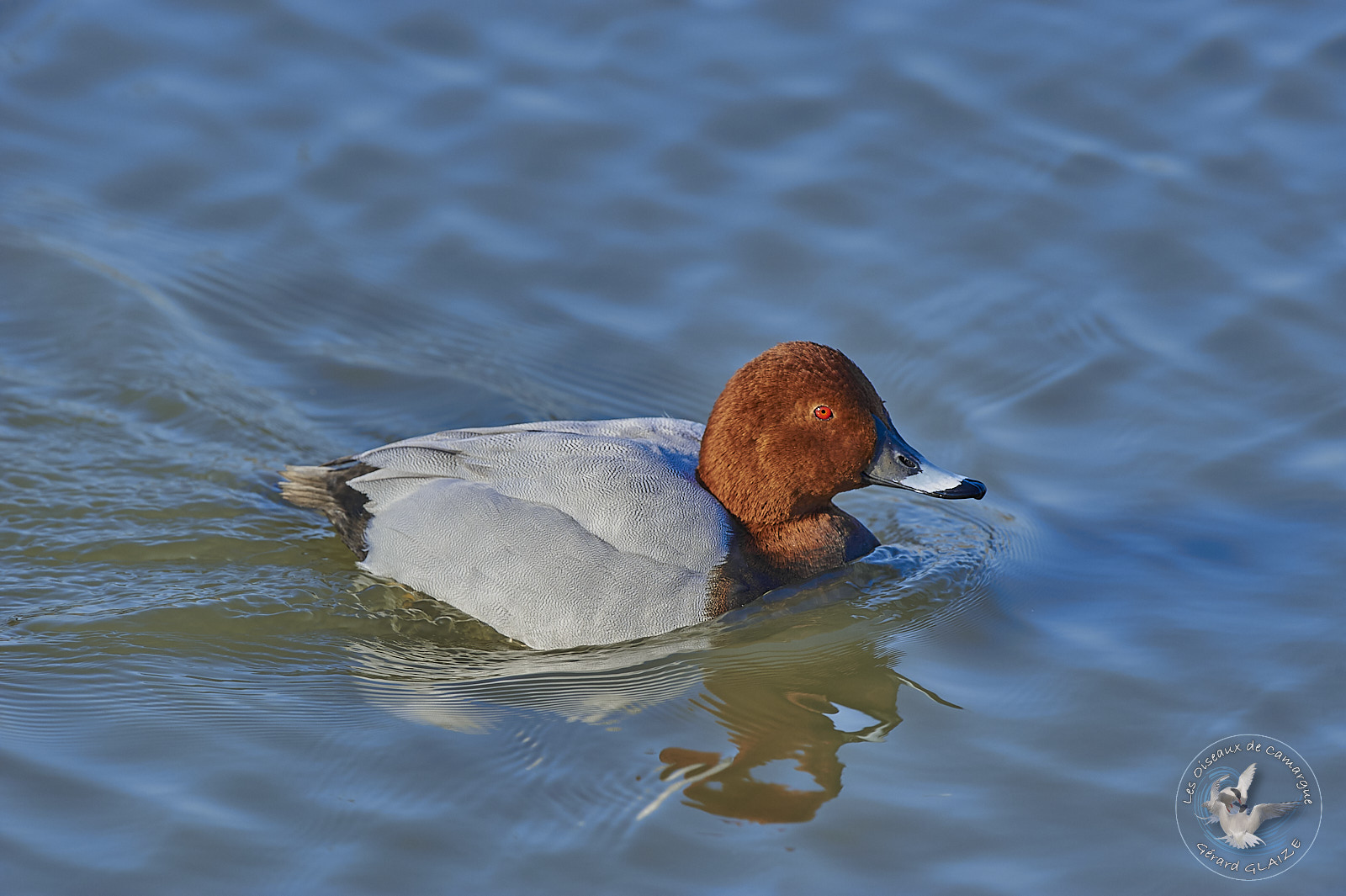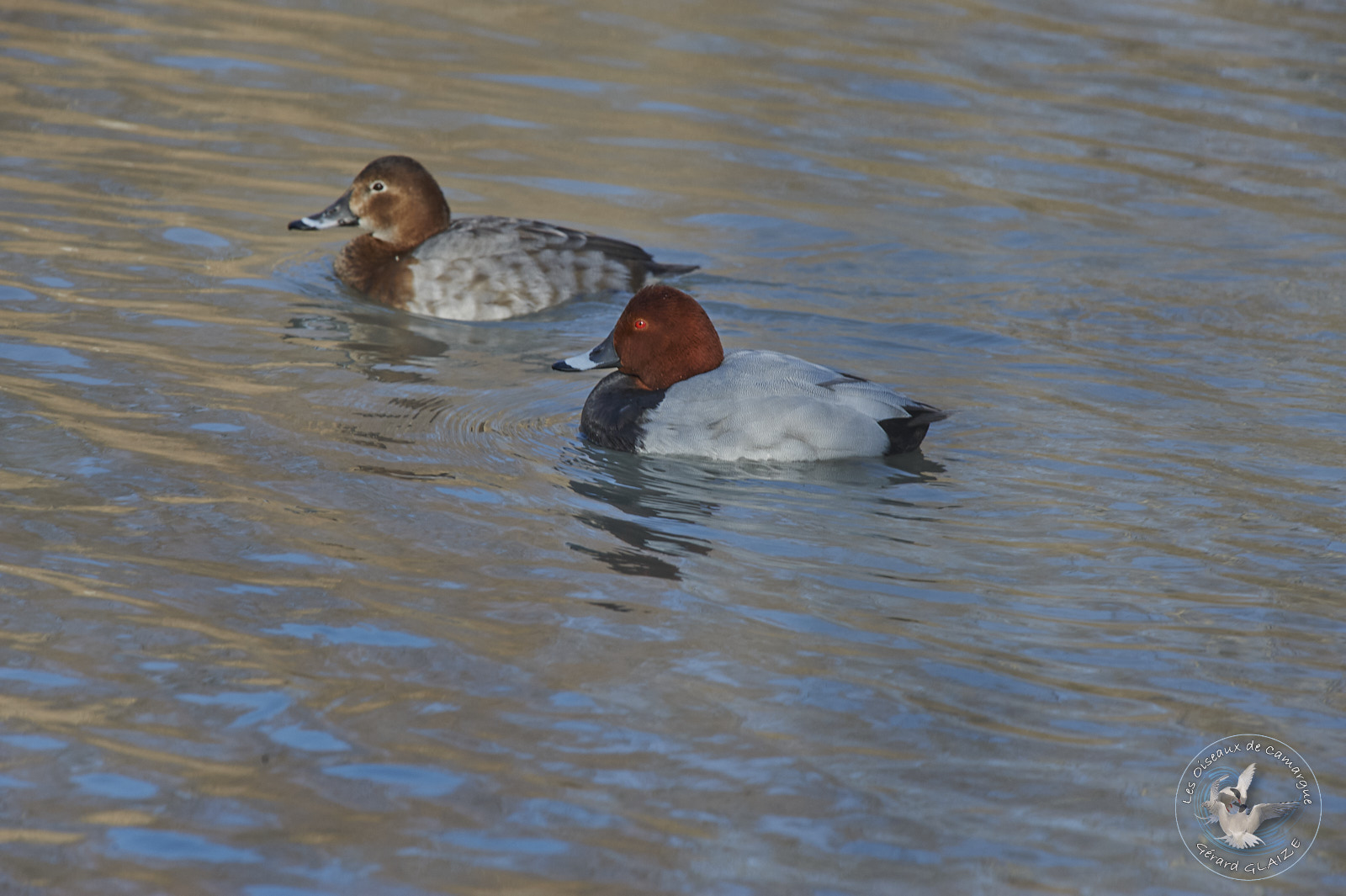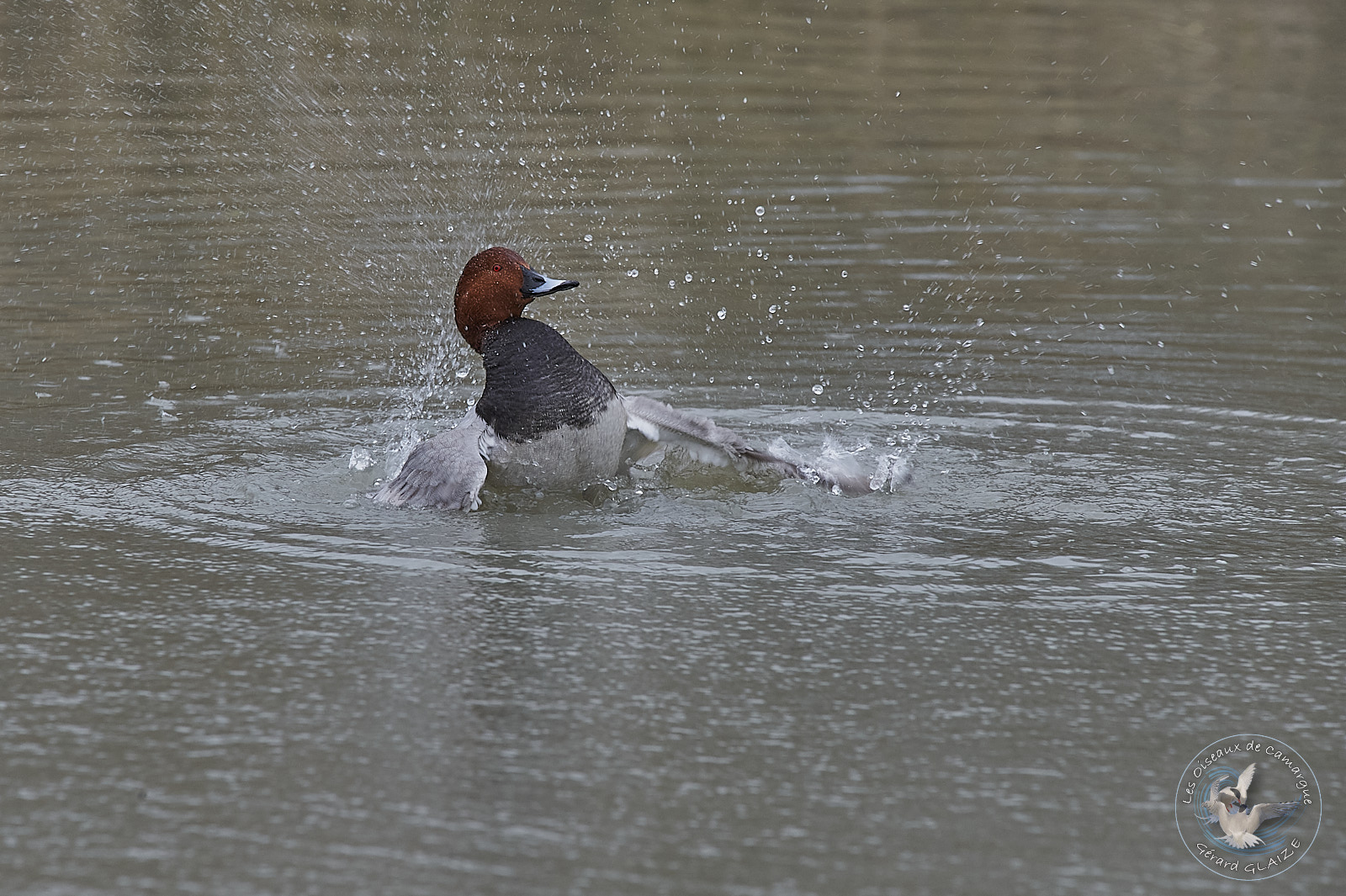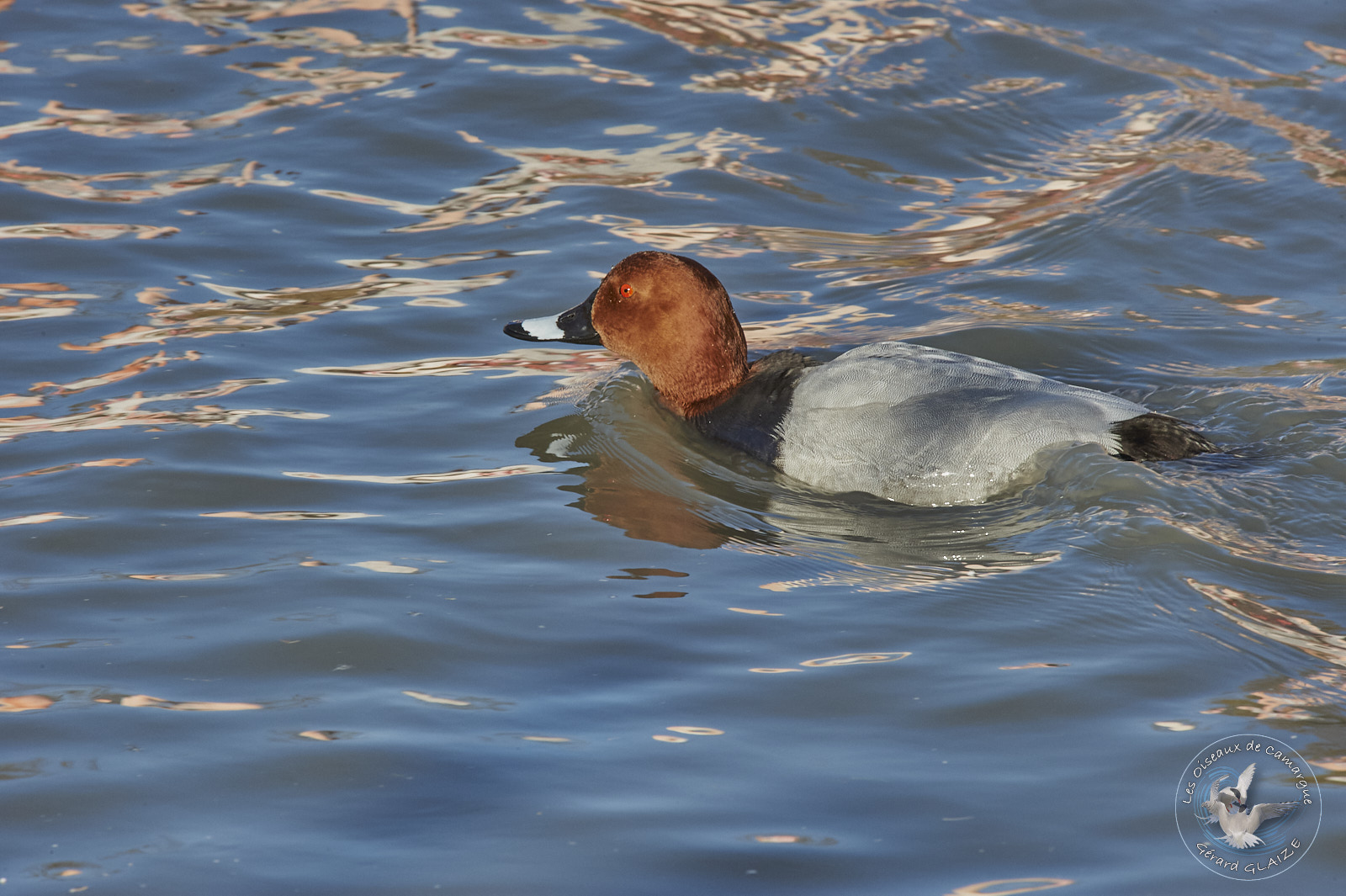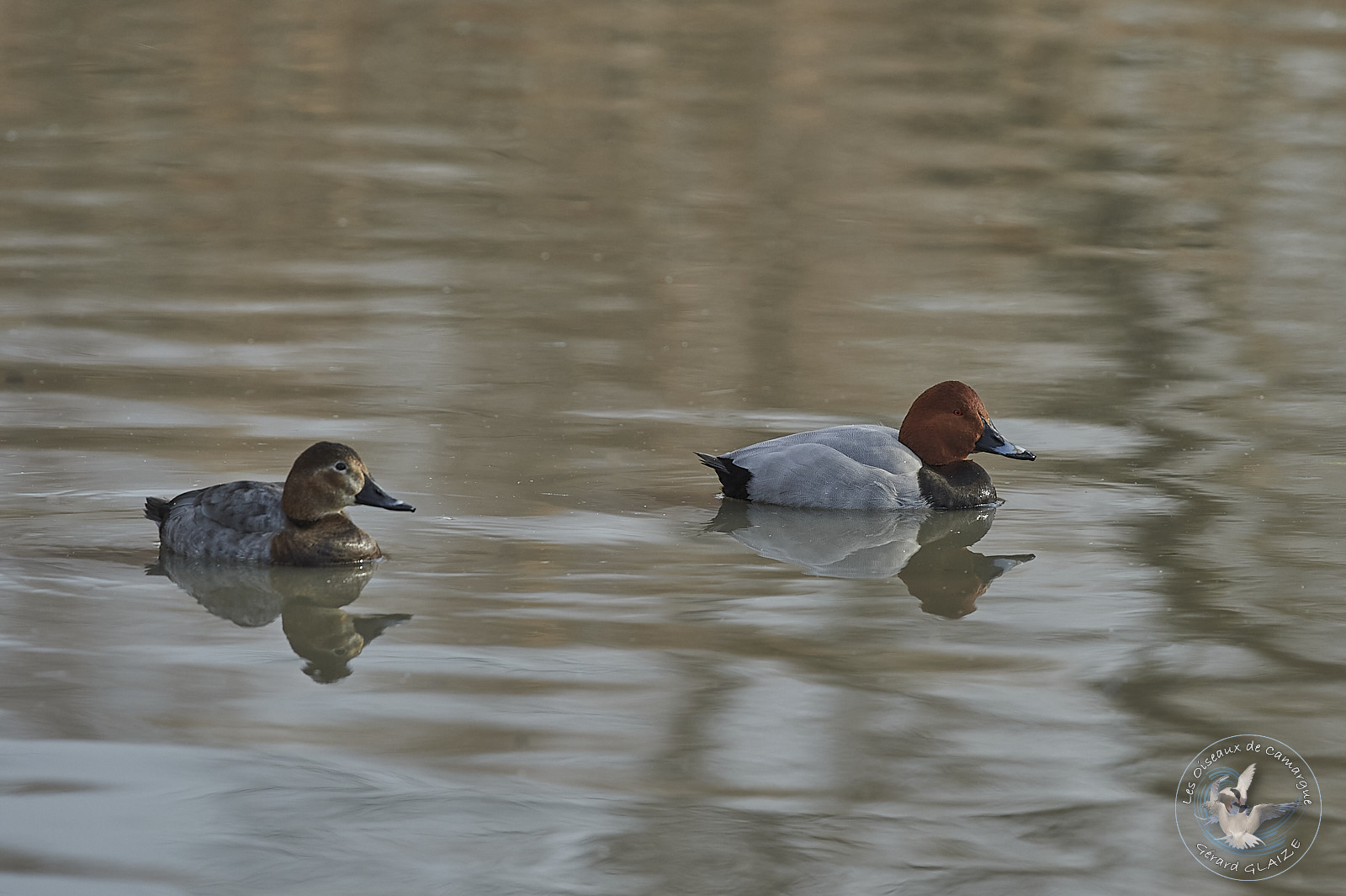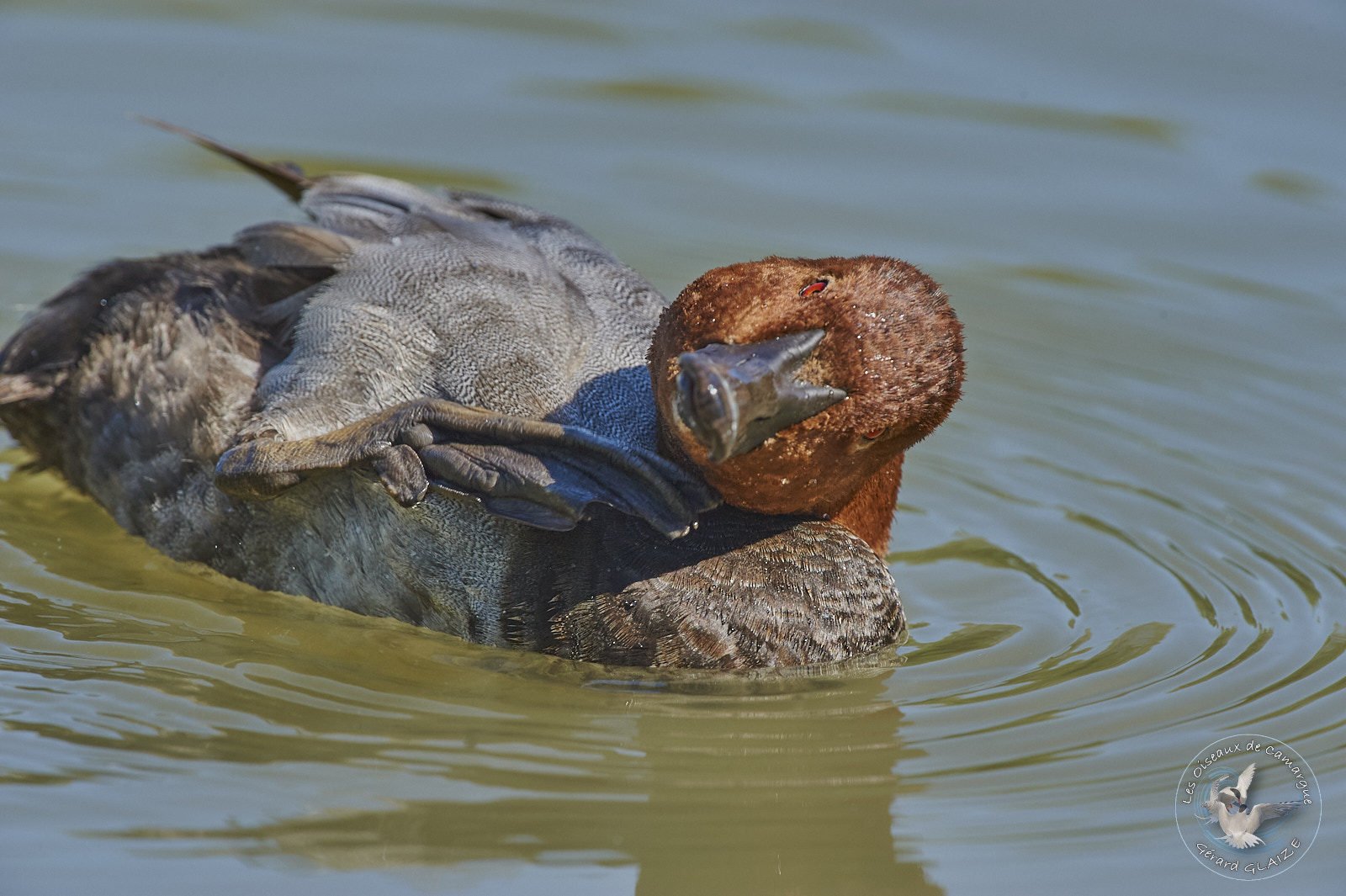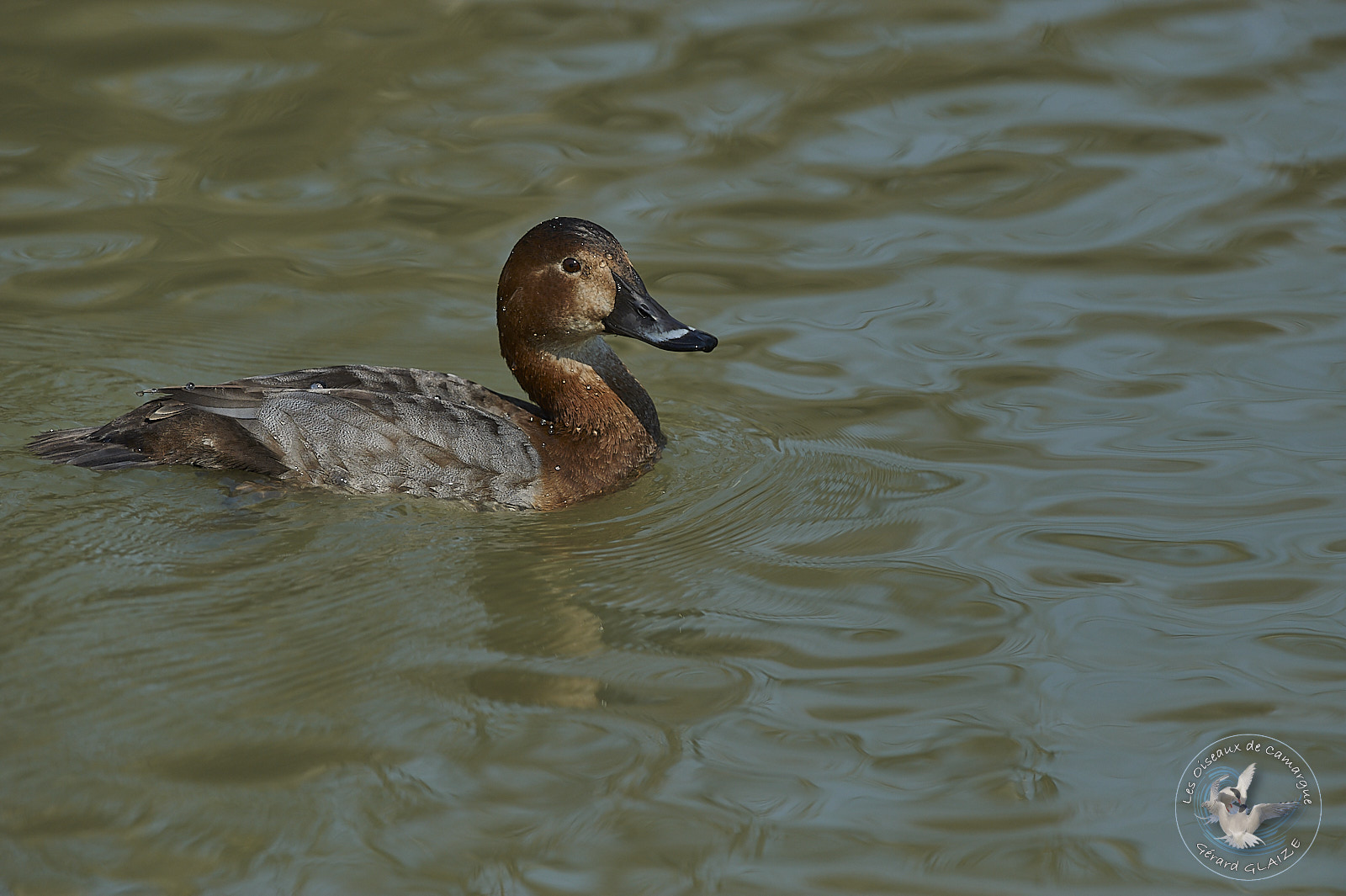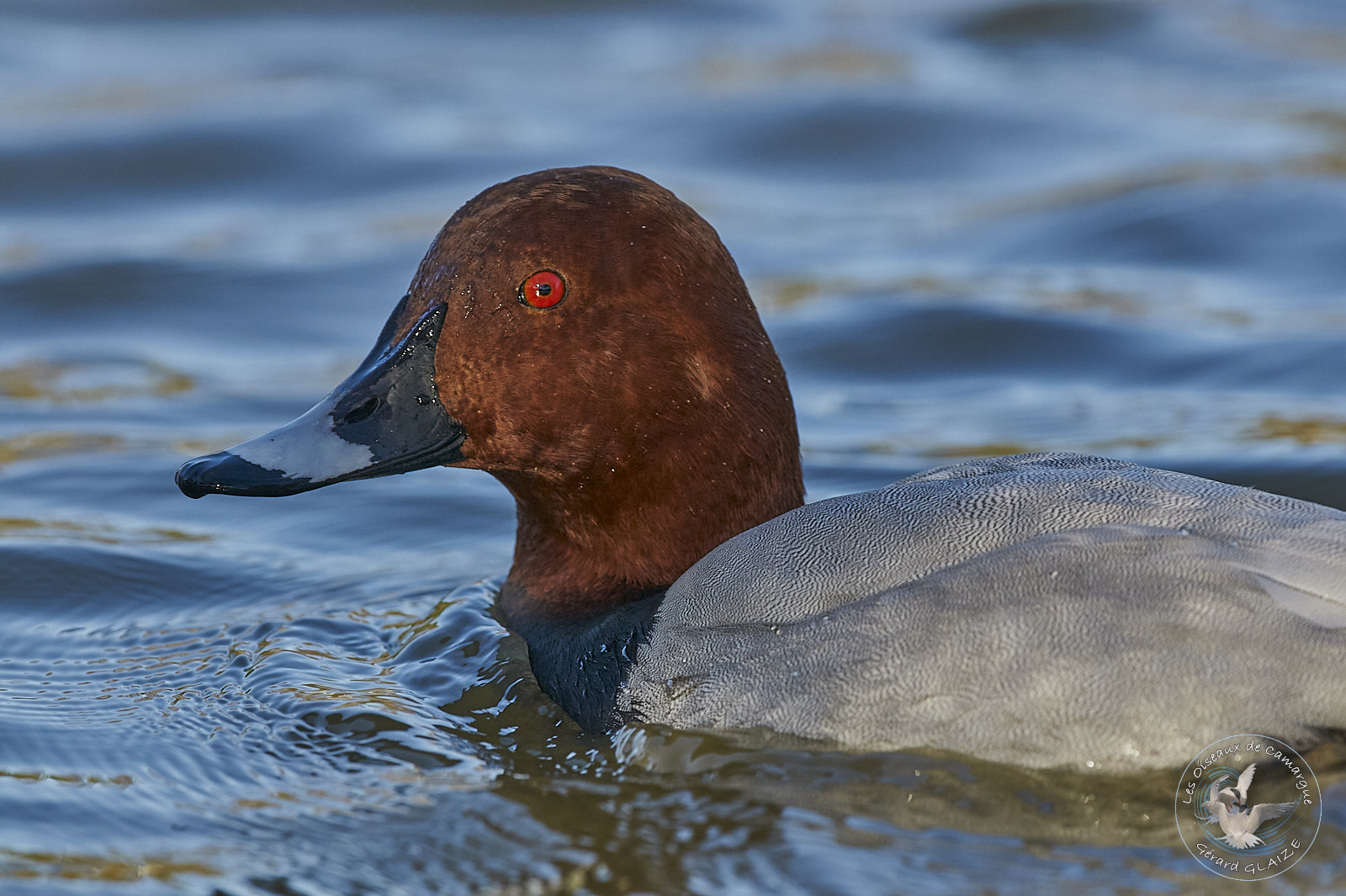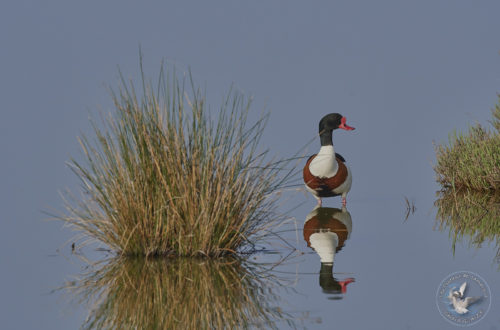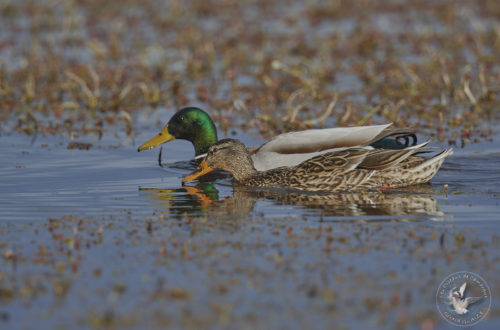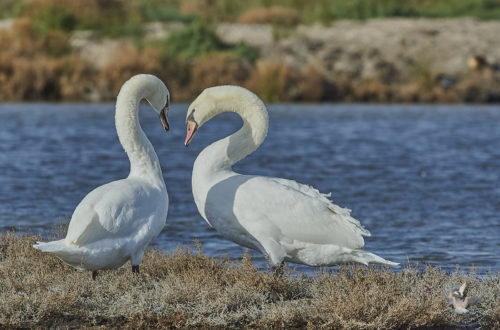Common Pochard
It is a medium-sized bird, slightly smaller than the mallard, with a short tail, the back of which is oriented upwards when swimming. Its long neck and its long beak with a concave culmen which continues with a sloping front give it a fairly typical profile, with a slightly conical crown. In all plumages, the wings show a diffuse greyish bar. The male in courtship has a reddish-brown head, a black beak with a pale gray distal line. The eye is red, the chest shiny black. Sides and back are light ash-grey. They appear almost whitish in bright light. The back is black.
The Common Pochard is a gregarious bird, forming large flocks in winter. It is a species of diving duck that can reach up to 2 meters deep. It disappears underwater after a short leap and normally remains submerged for 13 to 16 seconds.
Common Pochard
Scientific name : Aythya ferina
Family : Anatidae
Length: from 42 cm to 49 cm – Wingspan: from 70 cm to 80 cm
Weight : from 700 gr to 1.100 gr
IUCN Conservation Status: VU
Flight
He does not like to fly and prefers to dive to escape danger. This is not surprising because it must, to take off, gain momentum by running on the surface of the water while flapping its wings vigorously. However, once in the air, the common pochard progresses in rapid, direct flight, often adopting a ‘V’ formation.
Habitat
French breeders are mainly identified in a large northern half of the country: Dombes, Forez, Brenne, Lorraine and Sologne. A few individuals are found in the Camargue. During the nesting period, it frequents high and dense edges of aquatic vegetation as well as islets with dense cover, sheltered from terrestrial predators. The most commonly frequented environments are: fresh or brackish water ponds of medium depth (0.50 to 3 m).
Nesting
The male and female usually pair up while they are still wintering. The breeding season lasts mainly from April to June, and sometimes a few weeks longer in the northernmost sectors of the range. After mating, the male stays with the female until she has laid eggs. However, it generally does not take part in the incubation or rearing of the young. The nest is in the riparian vegetation, lined with the down of the female. It is often a simple depression framed by a cluster of plants. The female lays 7 to 10 eggs there, the incubation of which lasts 27 or 28 days. As soon as the chicks are born, the female leads them to the water.
Regime – Diet
Common Pochard eats almost anything it can reach while diving from the surface. However, it feeds mainly on seeds, roots, leaves and buds as well as aquatic plants such as duckweed and pondweed. While diving it also catches molluscs, crustaceans, worms and insect larvae. The pochard feeds mainly in the morning and evening. It prefers to feed in clear water, between 1 and 3.50 meters. However, it can also content itself with splashing around in shallow water.
Protection
Habitat loss threatens this species. The populations of this bird are in marked decline, and for this reason it is considered globally threatened (vulnerable) by the IUCN.
Species whose hunting is authorized in France. It is listed in Annexes II/1 and III/2 of the Birds Directive, in Annex II of the Bonn Convention and listed in category C1 of AEWA (North-East/North-West Europe and Central Europe/North-West populations). East/ Black Sea/ Mediterranean
.
Cry
It is a generally silent bird. The females emit hoarse grunts like that of the scaup, the males emit whistles interspersed with a nasal finish. The male inhales deeply before launching his courtship call, a long whistle which empties him of the accumulated air, giving the impression that he is deflating like a balloon.
Useful Links
Other Links
- You can see the article from my site “Birds of Camargue” for more information on the Camargue and the Birds.


